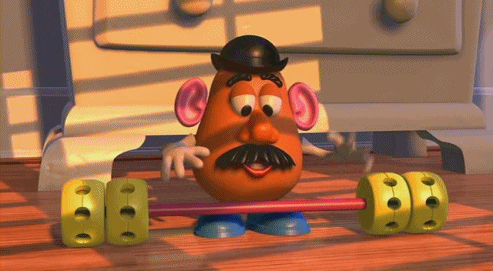
The days when you can barely descend the stairs of the gym after a workout or can’t seem to bend down to even lift a pen off the ground because you worked those muscles that much harder in the morning are the most satisfying ones, aren’t they?
After all, post-workout muscle soreness is a token of hard work/muscle strengthening for so many of you.
But, why on Earth is your hard work rewarded with soreness?
“Pushing your muscles beyond their current capacity can cause microscopic damage to the muscle fibres. Your body responds to this damage with increased inflammation,” explains Dr. Kruti Khemani, celebrity physiotherapist and founder, Continuum Sports Physiotherapy and Rehab, Mumbai.
She further adds that due to this phenomenon termed as the delayed onset of muscle soreness (DOMS)/ innocent soreness, one could experience pain and soreness 24-48 hours post workout.
In fact, this type of soreness can affect you regardless of your fitness level and is a sign of your improving fitness, according to Praveshh Gaur, fitness expert and founder, Srauta Wellness, Bengaluru.
Also read: Calling all skinny girls: This is your ultimate guide to gaining muscle
What if this “oft-cherished” pain is actually a serious injury?
Imagine that you, like a complete jackass, decided to “push your limits” at the gym and lifted weights way higher than you could manage or did more repetitions than you had ever done before, or simply performed an exercise with the wrong stance—all this in a bid to keep up with your instructor’s demand, or to impress fellow gym mates, or simply for the sake of getting quicker results.

In this case, the resulting pain could be due to an injury and not DOMS.
“The most common form of injuries due to an extensive/wrong workout are muscle pulls and strains, knee injury, shoulder injury, sprained ankle or wrist,” Gaur points out.
How to differentiate between good soreness and bad soreness?
According to Dr. Khemani, DOMS is usually characterised by pain and discomfort in the body part that has been worked upon and nowhere else. The resulting pain settles down within 2-3 days and the same workout can be repeated after 48 hours without any pain.
“Short-term loss of muscle strength or early muscle fatigue and reduced range of motion could also be some of the symptoms of innocent soreness,” adds Dr. Ismit Tyagi, head of department of physiotherapy, Columbia Asia Hospital, Gurugram.
On the other hand, bad soreness from injury can be characterised by sharp, acute pain originating from the point of injury and may also be accompanied by swelling, clotting or discoloration, according to fitness and lifestyle coach, Grandmaster Akshar.
Another point of difference pointed out by him, is that, while innocent soreness can be relieved with the help of gentle stretches, bad soreness may get worse after doing so. Hence, the injured area must not be stretched, unless advised by the doctor.
Also read: Are you losing fat or muscle? This detailed guide will help you figure out
So, when should you really stop?
If you’ve been an old horse at the gym, it might be easier for you to differentiate between good and bad soreness as you know that listening to your body is the key.
However, if you’re new in the game, you could follow Dr. Khemani’s advice: “If the muscle pain after workout extends beyond 48 hours and the severity of the soreness does not reduce or rather increases after doing the same workout post a gap of 48 hours, then it is time to stop exercising and seeing a health professional to rule out a sinister injury.”

All said and done, remember, there is never a good reason to stop exercising.
“If you hurt your shoulder at the gym, you can always ride a stationary bike or walk. If you hurt your ankle, go for a swim. There are honestly hundreds and thousands of ways to exercise. Pick an activity you are fond of and go with it,” says Dr. Tyagi.
Also read: Should women train differently than men to gain muscle? Experts reveal
As for preventing pain/injury, here’s what you can do according to Akshar:
In case of an injury…
The combined wisdom of all the experts consulted here say that you must not wait for matters to get worse if your workout soreness continues to last beyond 72 hours, in which case, you must consult a doctor for a proper diagnosis and treatment.
So, continue with your exercise schedule, but do keep certain things in mind to avoid muscle pain after workout.